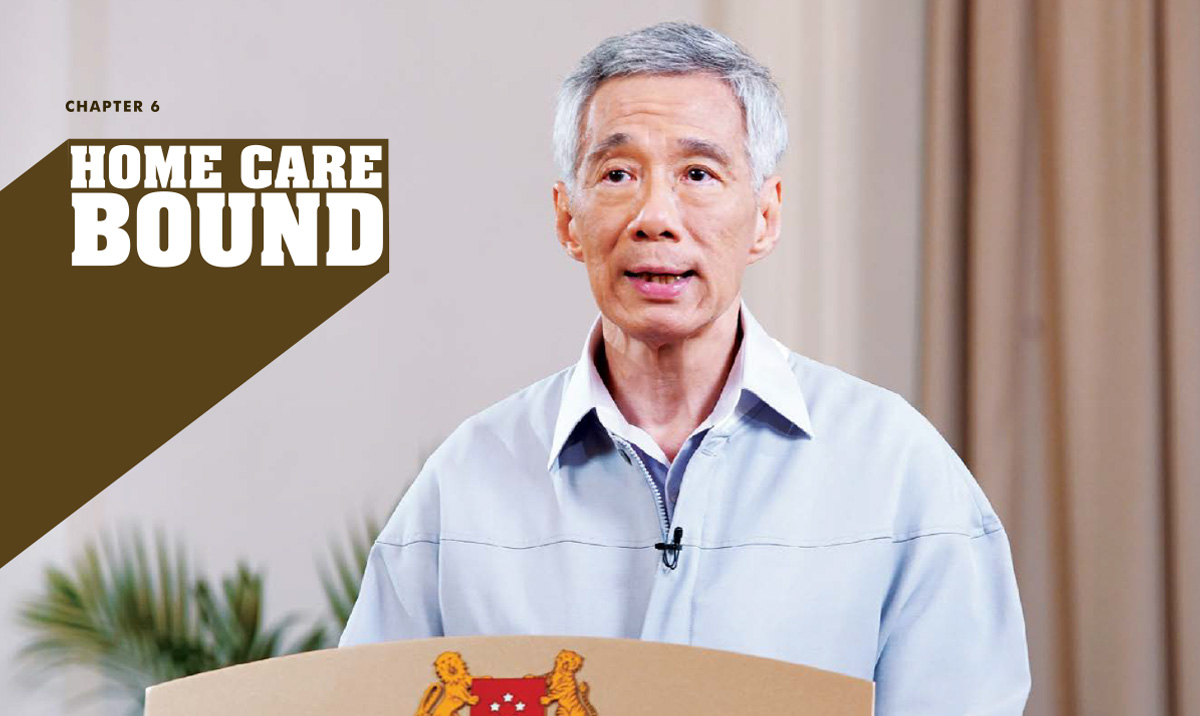
Prime Minister Mr Lee Hsien Loong addressing the nation on 21 October 2021 to explain why we had to prepare for living with endemic COVID-19.
Source: MCI
A mindset shift was also needed — COVID-19 patients with mild symptoms could recover from home safely, allowing limited healthcare resources to be allocated to more severe cases. Learning to live with endemic COVID-19 would also allow Singapore to open its economy and borders.
So, on 30 August 2021, MOH launched a pilot Home Recovery Programme (HRP) for 21 mildly ill COVID-19 patients to recover at home instead of in hospital or CCFs, after ensuring that their household and social conditions were suitable. A small team from MOH served as dedicated Home Recovery Buddies to the patients. This small-scale pilot programme was a success.
MOH initiated a pilot programme on 30 Aug 2021 for 21 mildly ill COVID-19 patients to recover at home.
But then COVID-19 cases began rising rapidly with the emergence of the more infectious Delta variant. This was a time of high anxiety for Singaporeans as Delta was more virulent than the Alpha, Beta and Gamma variants prevalent up to that time. Those with mild respiratory symptoms rushed to Accident & Emergency departments, and many who feared passing the virus to family members wanted to be housed at CCFs. Fortunately, the number of serious cases requiring oxygen supplementation or Intensive Care Unit (ICU) treatment was mitigated by the population's high vaccination rate. But the high total case count made it urgent to implement Home Recovery as the default mode for COVID-19 patients who were mildly ill.

|
SINGAPORE'S COVID-19 OUTBREAK RISE IN DAILY REPORTED INFECTIONS |
Infection numbers rose in September 2021 because of the Delta strain.
Source: MOH COVID-19 Statistics
The programme for home recovery had to be expanded nationwide at short notice, and the MOH team faced difficulties coping with the sudden surge in cases. The public's anxiety and frustration grew when those recovering at home or living with a COVID-19 patient could not get information from the authorities on what they should do. MOH's dedicated hotline could not handle all the daily calls. There were delays in the onboarding and discharge processes for COVID-19 patients. Those who had recovered were still being denied “Safe Entry” to workplaces and public amenities. There was also a growing need to cater to groups with medical and special needs, such as pregnant, paediatric, immunocompromised, disabled and palliative care patients. On top of these problems, the Microsoft Excel and email-based IT systems tracking the transfer of patients to suitable medical facilities could not cope with the increase in cases.